前言
在这篇文章中搭建了crash的调试环境,简单的描述了crash的使用:centos7 kdump、crash调试内核,接下来详细描述crash的功能,主要是调试系统正在运行的内核虚拟地址空间。
crash [OPTION]... [NAMELIST] (live system form)
1.dis
disassembles memory, either entire kernel functions, from a location for a specified number of instructions, or from the start of a function up to a specified memory location.
反汇编整个内核函数,内存地址、从指定数量的指令的位置,或从函数的开始到指定的内存位置
cat /proc/kallsyms | grep '\<_text\>'
cat /proc/kallsyms | grep '\<startup_64\>'
_text是内核代码段的起始地址,也就是 startup_64 函数

(1)
反汇编整个函数:
dis startup_64

查看函数text_poke源码,所在文件,以及行数:
dis -s text_poke
-s displays the filename and line number of the source code that
is associated with the specified text location, followed by a
source code listing if it is available on the host machine.
The line associated with the text location will be marked with
an asterisk; depending upon gdb's internal "listsize" variable,
several lines will precede the marked location. If a "count"
argument is entered, it specifies the number of source code
lines to be displayed after the marked location; otherwise
the remaining source code of the containing function will be
displayed.
显示了函数text_poke在内核源码中哪个文件,行数,以及函数源码:
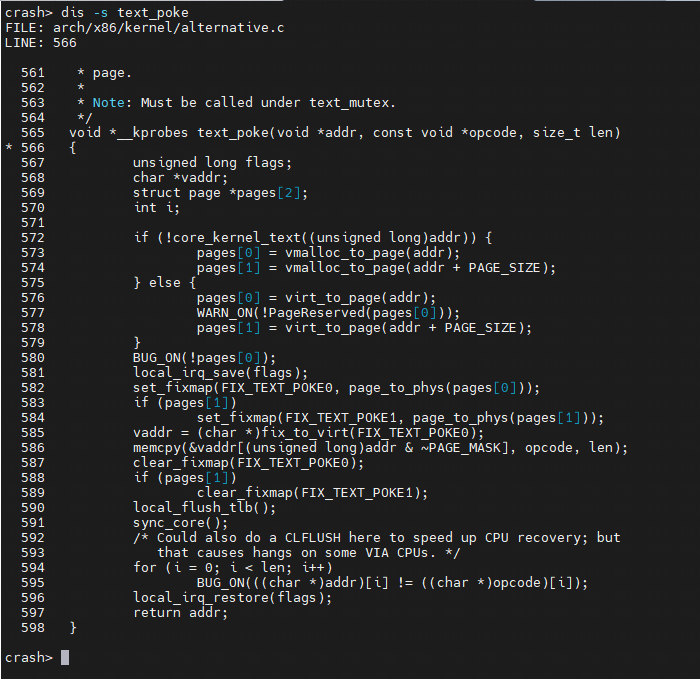
我与源码进行对比,内核版本3.10.0:
//arch/x86/kernel/alternative.c
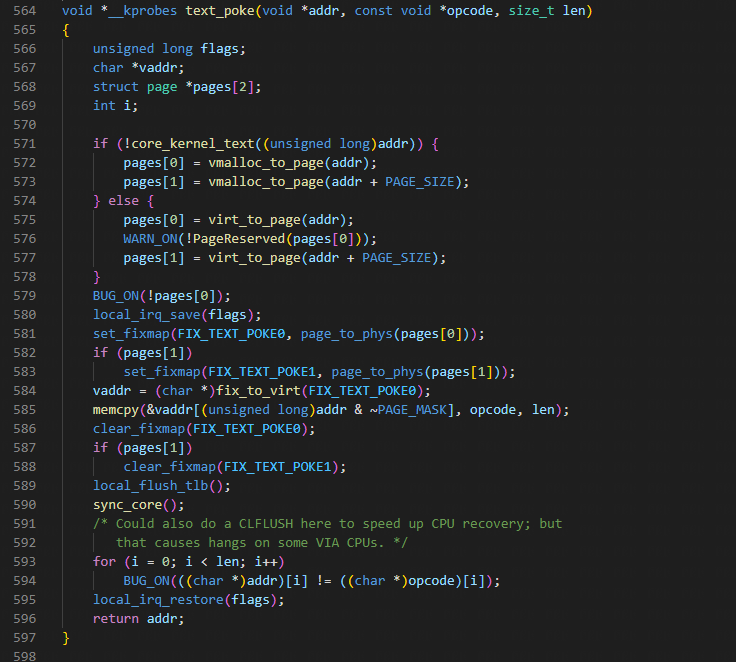
(2)
分别从startup_64函数开始反汇编 一条指令,两条指令,三条指令

(3)
从startup_64函数指定的偏移位置开始反汇编
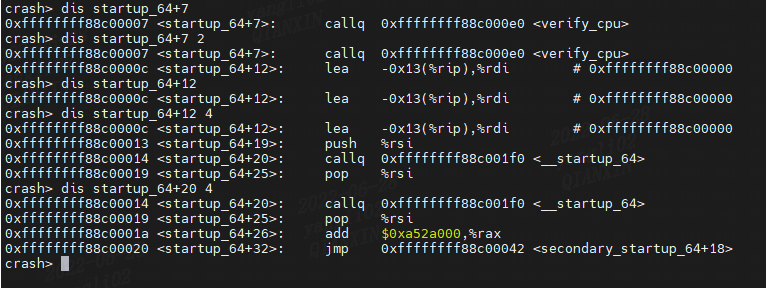
(4)
从指定内存地址开始反汇编

2.rd
displays the contents of memory, with the output formatted in several different manners.
Enter "help rd" for details.
显示内存的内容,并以几种不同的方式格式化输出。
(1)
我用castone反汇编出来的三条跳转指令为例,包括其地址,操作码,操作数,和机器码。

分别从对应的内存地址读取32位,64位,16位内容进行对比机器码,经过对比机器码一样。
-8 display output in 8-bit values.
-16 display output in 16-bit values.
-32 display output in 32-bit values (default on 32-bit machines).
-64 display output in 64-bit values (default on 64-bit machines).

(2)
rd读取jiffies全局变量,显示其地址和值:

Read jiffies in hexadecimal and decimal format:

(3)
Read Linux version


3.struct
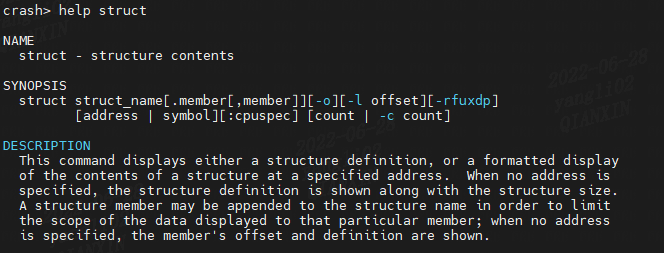
查看结构体成员:
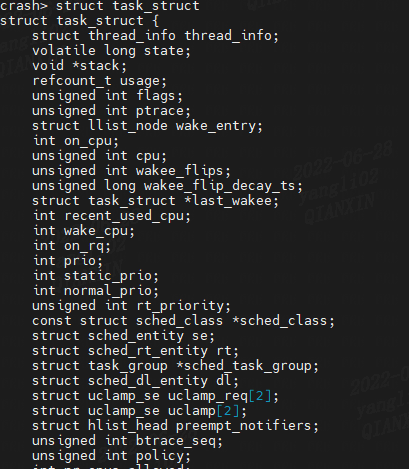
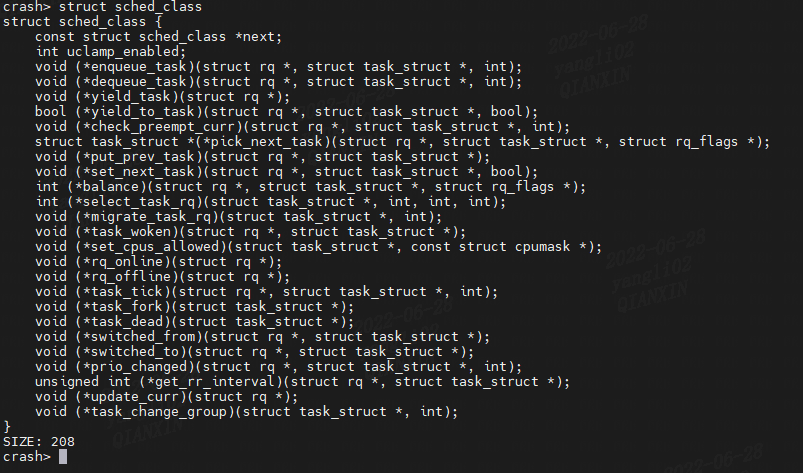
查看结构体成员以及其各个成员的相对偏移位置:
-o show member offsets when displaying structure definitions;
if used with an address or symbol argument, each member will be preceded by its virtual address.
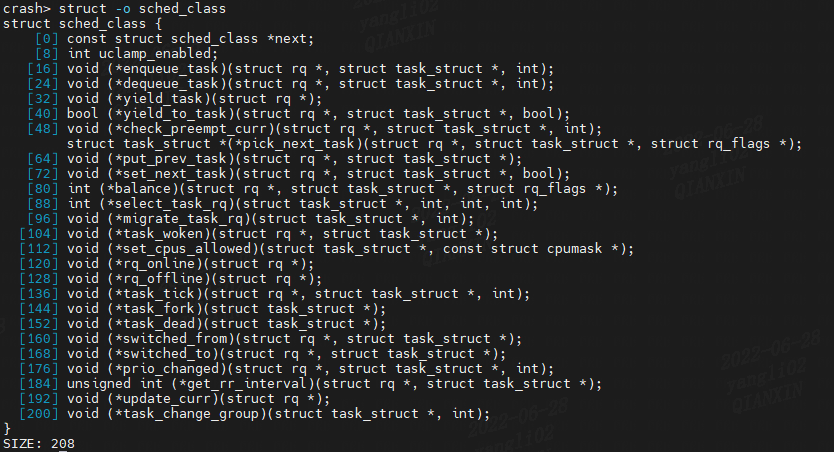
(2)
查看packet套接字:

把指定地址的内容以 struct sock结构体解析打印:
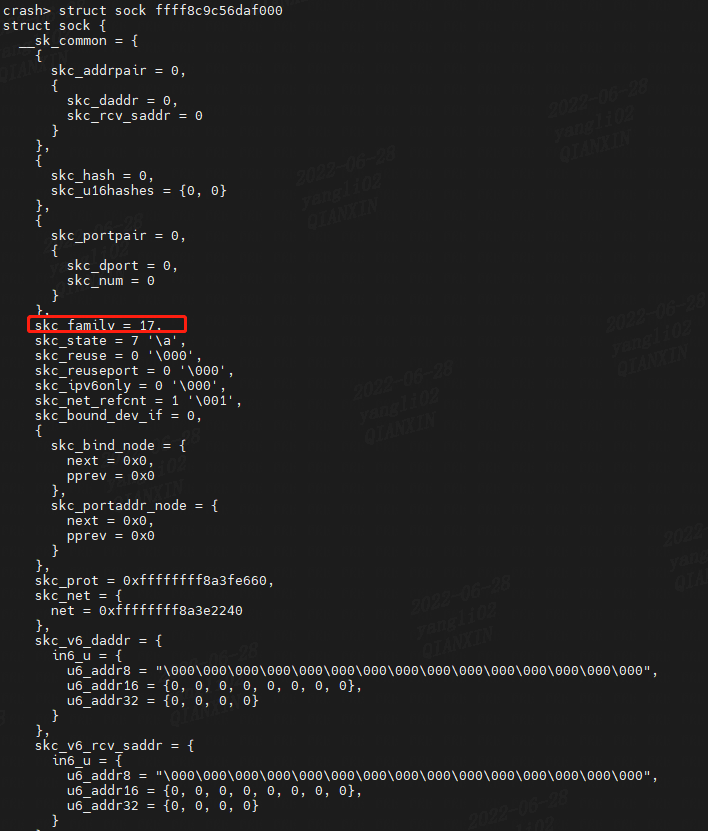
include/linux/socket.h
#define AF_PACKET 17 /* Packet family */
#define PF_PACKET AF_PACKET
查看结构体成员以及其各个成员的绝对虚拟地址位置:
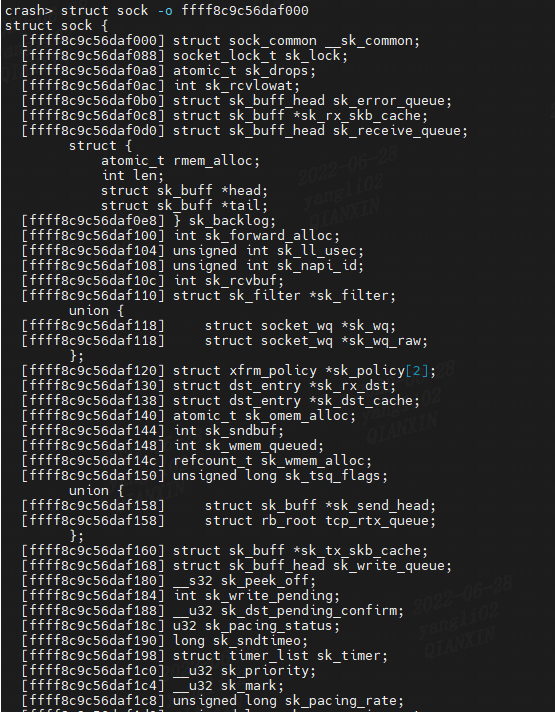
4.mod
查看已经加载的模块信息:


5.set
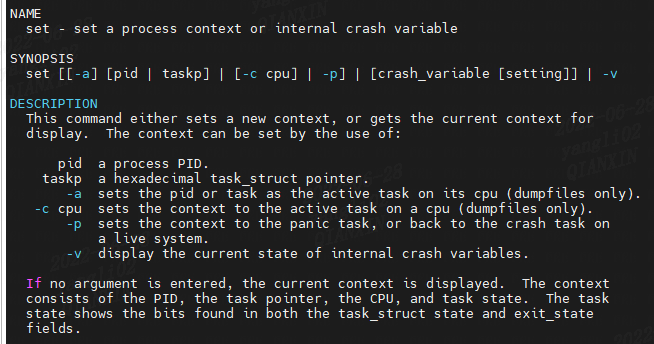


6.task
查看指定任务的task_struct和thread_thread信息
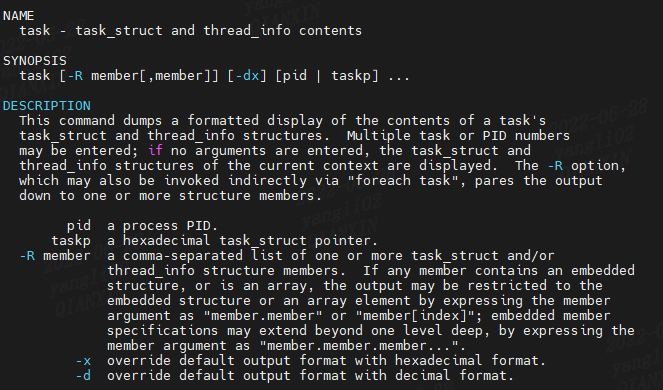

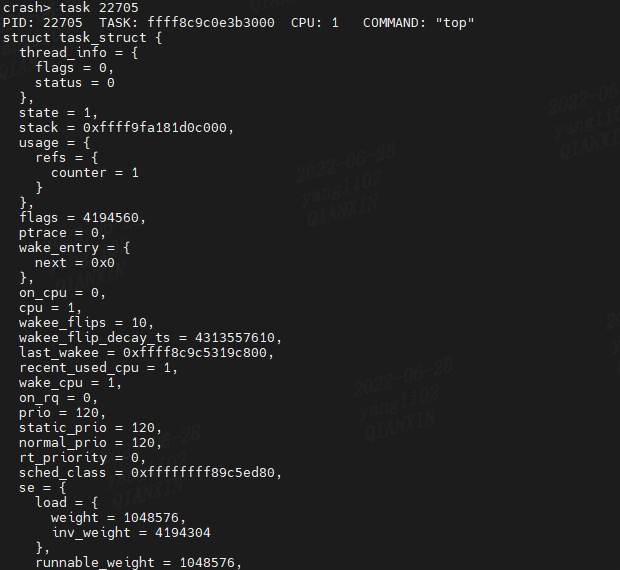
7.ps

查看活跃的进程:

查看用户态进程:
-u restrict the output to only user tasks.

查看内核态进程:
-k restrict the output to only kernel threads.

查看线程组中的线程组领导者:
-G display only the thread group leader in a thread group.
Display only the thread group leader in the crash session:

查看进程的资源限制:
-r display resource limits (rlimits) of selected, or all, tasks.
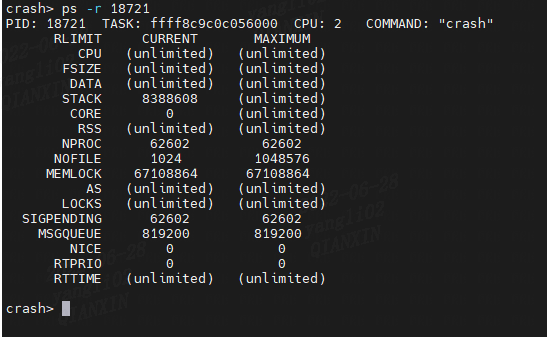
查看进程的子进程:
-c display the children of selected, or all, tasks.

查看进程的父进程:


8.p
查看全局变量的值:
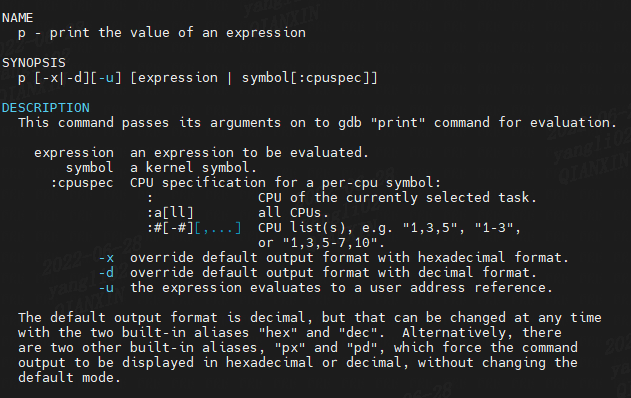
(1)
Print the contents of jiffies

(2)
Print the contents of the vm_area_struct "init_mm"
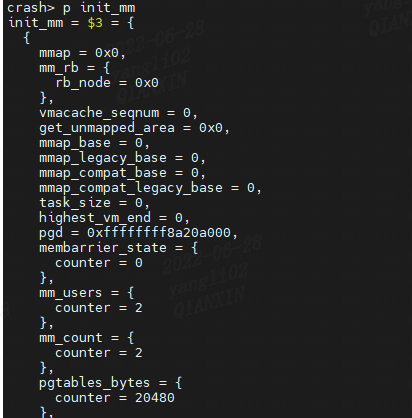
(3)
If a per-cpu symbol is entered as a argument, its data type and all of its per-cpu addresses are displayed:

To display the contents a per-cpu symbol for CPU 1, appenda cpu-specifier:

(4)打印TCP缓冲区参数
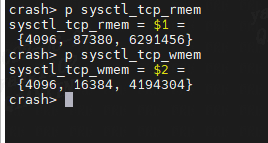

可以看到通过crash和/proc/sys/看到的全局变量值是一样的。
总结
通过help查看crash支持的命令:
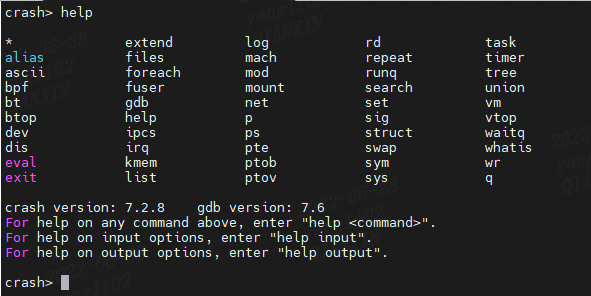
对于每个命令的使用和说明可以用help查看:

参考资料
https://www.jianshu.com/p/ad03152a0a53
https://blog.csdn.net/KingOfMyHeart/article/details/98240185